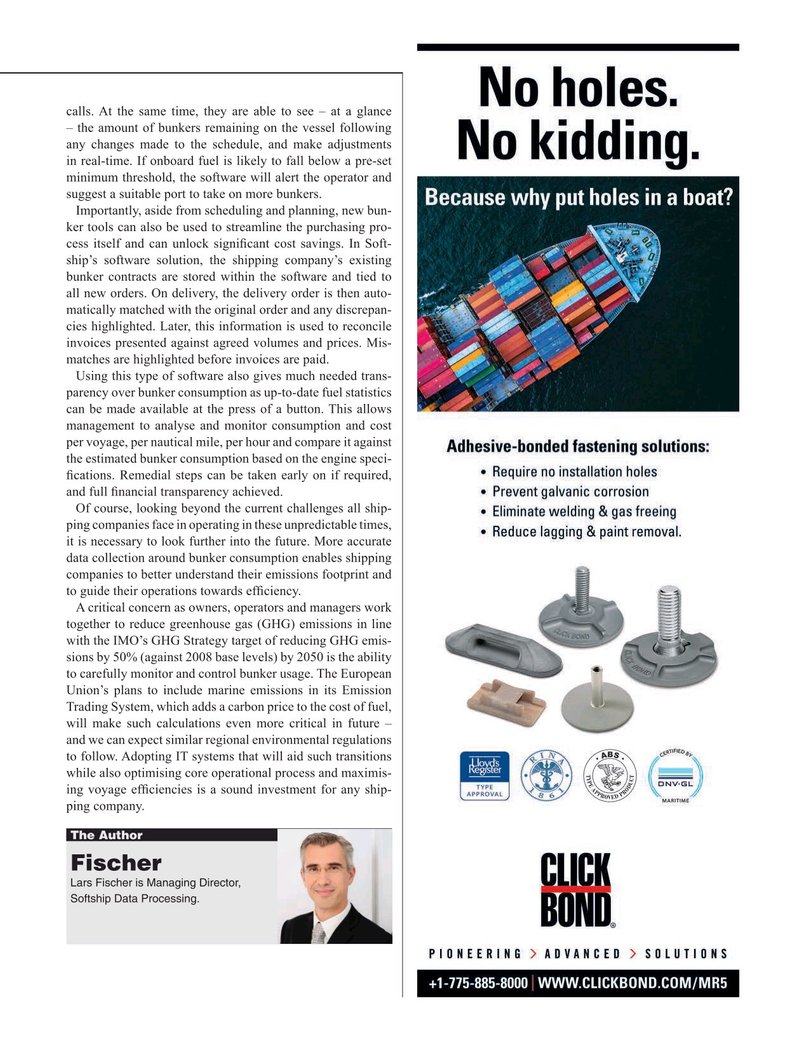
Page 27: of Maritime Reporter Magazine (November 2020)
Workboat Edition
Read this page in Pdf, Flash or Html5 edition of November 2020 Maritime Reporter Magazine
calls. At the same time, they are able to see – at a glance – the amount of bunkers remaining on the vessel following any changes made to the schedule, and make adjustments in real-time. If onboard fuel is likely to fall below a pre-set minimum threshold, the software will alert the operator and suggest a suitable port to take on more bunkers.
Importantly, aside from scheduling and planning, new bun- ker tools can also be used to streamline the purchasing pro- cess itself and can unlock signi? cant cost savings. In Soft- ship’s software solution, the shipping company’s existing bunker contracts are stored within the software and tied to all new orders. On delivery, the delivery order is then auto- matically matched with the original order and any discrepan- cies highlighted. Later, this information is used to reconcile invoices presented against agreed volumes and prices. Mis- matches are highlighted before invoices are paid.
Using this type of software also gives much needed trans- parency over bunker consumption as up-to-date fuel statistics can be made available at the press of a button. This allows management to analyse and monitor consumption and cost per voyage, per nautical mile, per hour and compare it against the estimated bunker consumption based on the engine speci- ? cations. Remedial steps can be taken early on if required, and full ? nancial transparency achieved.
Of course, looking beyond the current challenges all ship- ping companies face in operating in these unpredictable times, it is necessary to look further into the future. More accurate data collection around bunker consumption enables shipping companies to better understand their emissions footprint and to guide their operations towards ef? ciency.
A critical concern as owners, operators and managers work together to reduce greenhouse gas (GHG) emissions in line with the IMO’s GHG Strategy target of reducing GHG emis- sions by 50% (against 2008 base levels) by 2050 is the ability to carefully monitor and control bunker usage. The European
Union’s plans to include marine emissions in its Emission
Trading System, which adds a carbon price to the cost of fuel, will make such calculations even more critical in future – and we can expect similar regional environmental regulations to follow. Adopting IT systems that will aid such transitions while also optimising core operational process and maximis- ing voyage ef? ciencies is a sound investment for any ship- ping company.
The Author
Fischer
Lars Fischer is Managing Director,
Softship Data Processing.
MR #11 (18-33).indd 27 11/10/2020 9:22:35 AM

 26
26

 28
28
